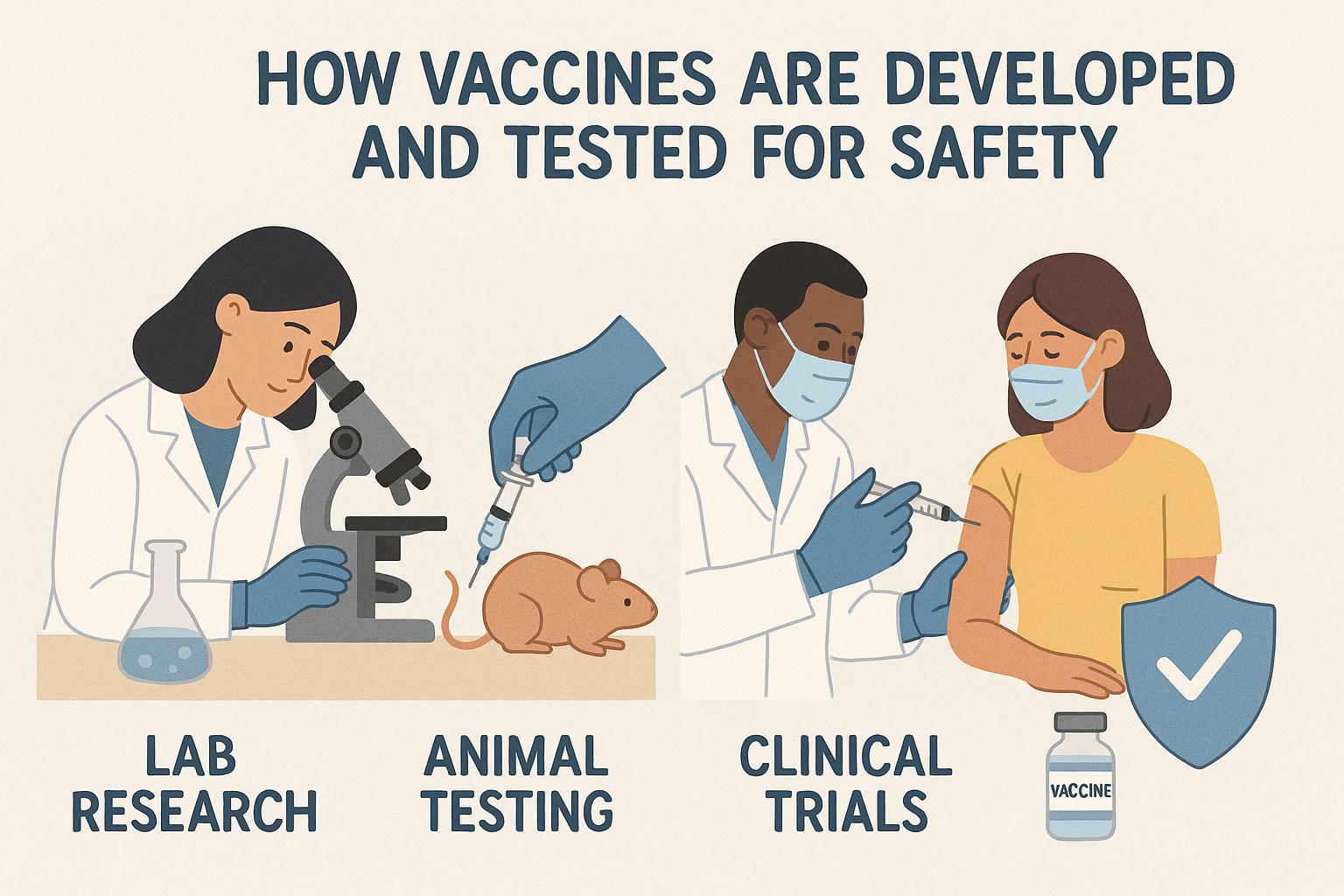
How vaccines are developed and tested for safety.
Introduction to Vaccine Development
Vaccine development is a sophisticated and exacting process that spans multiple years and involves various research and testing phases to ensure vaccines’ suitability for public use. This comprehensive journey takes them from initial laboratory work to becoming accessible medical solutions, undergoing numerous crucial stages. These stages are designed to assess and confirm the safety and efficacy of the vaccines, making certain they offer protection without posing significant risks.
Research and Discovery
The beginning of vaccine development involves identifying the pathogenic agent responsible for causing disease. This initial step requires an in-depth understanding of the pathogen’s genetic composition and structural characteristics. Scientists leverage this knowledge to pinpoint potential vaccine targets. During this stage, considerable focus is often placed on selecting specific antigens—molecules capable of inducing an immune response as they are foreign to the body. Researchers conduct meticulous laboratory experiments and preliminary in vitro studies that are crucial for identifying viable vaccine candidates.
Preclinical Testing
Once researchers identify a promising target, the vaccine advances into the preclinical testing phase. This involves a series of experiments conducted both in laboratories and using animal models. The primary goal is to observe the immune response triggered by the vaccine and identify any toxicological concerns. Preclinical testing serves as a gateway to gather formative data about the vaccine’s potential efficacy and safety, which is pivotal before transitioning to human trials.
Clinical Trials
The progression to clinical trials marks a pivotal juncture in vaccine development. This phase is segmented into three distinct stages:
Phase 1: The vaccine is administered to a small group of healthy individuals. The primary objective at this stage is to evaluate safety. Researchers aim to determine the optimal dosage and detect any immediate side effects or adverse reactions. This phase lays the groundwork for subsequent broader trials.
Phase 2: Having demonstrated safety in Phase 1, the vaccine is then tested on a larger cohort, typically comprising hundreds of participants. The aim here is to assess the vaccine’s capability to provoke a robust immune response while continuing to monitor safety. The data collected during this phase help refine the vaccine’s formulation and broaden understanding of its immunogenic potential.
Phase 3: This phase involves trials with thousands of individuals. It serves to conclusively validate the vaccine’s effectiveness and provides comprehensive monitoring for side effects within a much larger population. This stage is critical for assembling a robust dataset that informs the decision-making of regulatory authorities.
Regulatory Review and Approval
With the completion of clinical trials, a detailed dossier of findings is submitted to regulatory bodies such as the U.S. Food and Drug Administration (FDA) or the European Medicines Agency (EMA). These organizations engage in a meticulous review process, evaluating the data to ensure that the vaccine meets high standards of safety and effectiveness. A successful evaluation results in the granting of approval or, in urgent public health circumstances, an emergency use authorization is issued.
Post-Approval Monitoring
The journey doesn’t cease with regulatory approval. Post-approval, vaccines are subject to ongoing surveillance—a phase often referred to as post-marketing surveillance. This continuous monitoring aims to detect adverse events that may not have been evident during clinical trials. This adaptive process allows for adjustments and updates to guidelines, ensuring sustained public health protection and addressing any emerging safety concerns.
Conclusion
In summary, the vaccine development pipeline is an exhaustive and methodical process designed with a singular priority in mind: to secure public health. The multifaceted steps, beginning from the discovery of a pathogen to the extensive scrutiny required for regulatory approval, collectively ensure that vaccines are both safe and effective. This meticulous approach underscores the critical importance of each phase in affirming the suitability of vaccines for public use, embodying a commitment to safeguarding health on a global scale.
